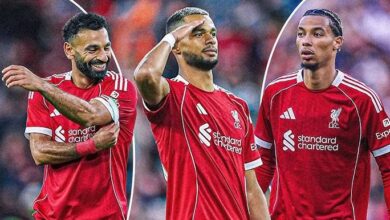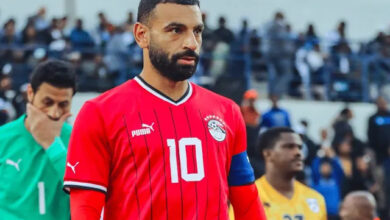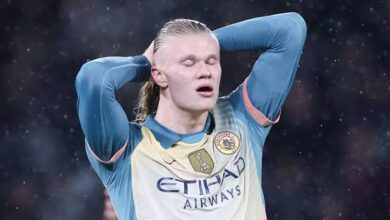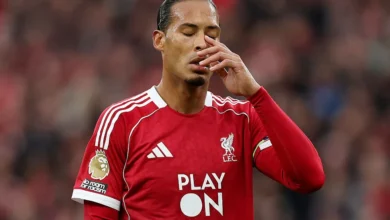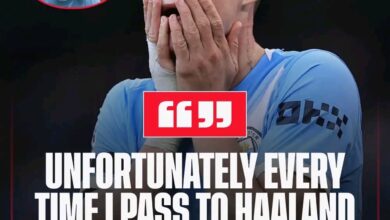Arsenal’s Strategic Evolution: How Kai Havertz’s Versatility Validates Mikel Arteta’s Vision Amid Viktor Gyokeres’ Arrival
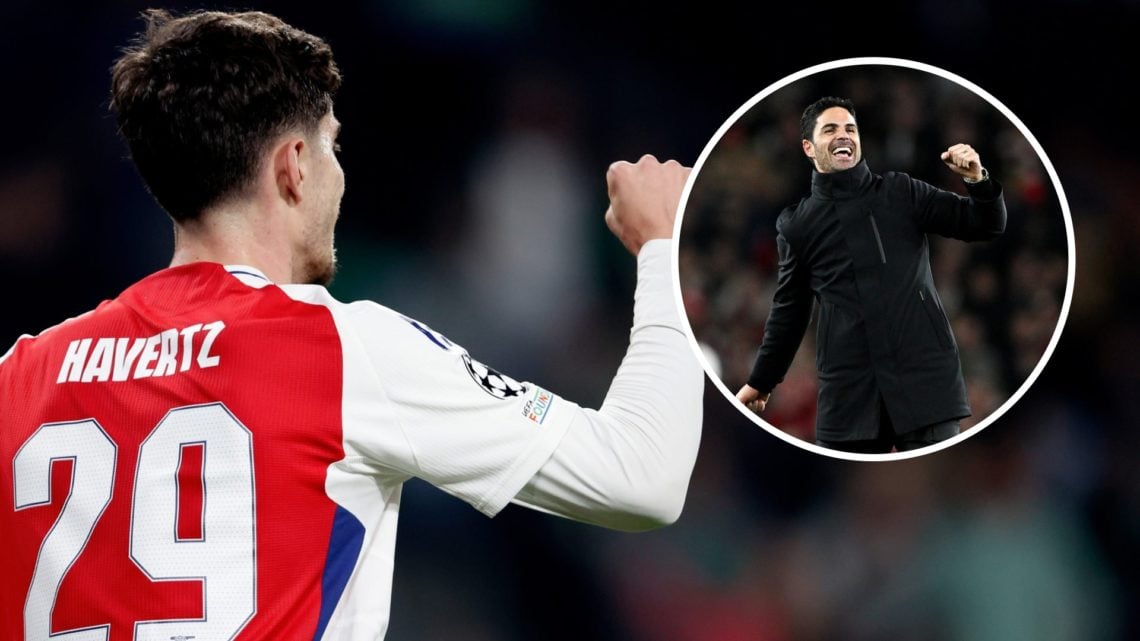
The landscape of modern football is constantly shifting, with tactical innovations and strategic player acquisitions defining the success of elite clubs. At Arsenal, under the astute guidance of Mikel Arteta, this evolution has been particularly pronounced, nowhere more so than in the case of Kai Havertz and the recent high-profile acquisition of Viktor Gyokeres. The German international’s journey at the Emirates Stadium represents a fascinating case study in tactical flexibility, player development, and the vindication of a manager’s long-term vision
Arsenal’s pursuit of a clinical striker has been one of football’s most scrutinized transfer sagas in recent seasons. The Gunners’ struggles in front of goal have been well-documented, with the team’s inability to convert chances into goals proving costly in their pursuit of major silverware. The absence of a reliable, prolific number nine has haunted Arsenal’s ambitions, particularly during crucial periods when injuries to key players exposed the squad’s lack of depth in attacking positions.
The situation reached a critical juncture during the latter half of the previous campaign when Kai Havertz was sidelined for twelve matches due to a hamstring injury. Compounding this setback was Gabriel Jesus’ concurrent injury problems, leaving Arsenal bereft of recognized center-forwards at precisely the moment when their title challenge was reaching its crescendo. This unfortunate convergence of circumstances forced Arteta into tactical improvisations that, while showcasing his tactical acumen, ultimately proved insufficient for sustaining a championship bid.
The manager’s decision to deploy Mikel Merino and Leandro Trossard as makeshift central attackers demonstrated his willingness to adapt, but it also highlighted the squad’s structural limitations. These tactical experiments, while occasionally effective, lacked the consistency and natural predatory instincts that a purpose-built striker would provide. The consequence was a gradual erosion of Arsenal’s title challenge, as Liverpool capitalized on their rivals’ struggles to establish an insurmountable lead at the Premier League’s summit.
Saturday night’s announcement of Viktor Gyokeres’ £63.7 million transfer from Sporting CP represented the culmination of Arsenal’s extensive search for their ideal striker. The Swedish international’s arrival has been met with considerable excitement among the Arsenal faithful, who have witnessed their team’s attacking evolution with growing anticipation. Gyokeres brings with him an impressive track record from his time in Portugal, where his physicality, movement, and clinical finishing have marked him as one of Europe’s most promising forwards.
The substantial investment in Gyokeres signals Arsenal’s serious intent to bridge the gap between their current position and their championship aspirations. His profile as a traditional number nine addresses many of the tactical challenges that have plagued Arsenal’s attacking play. Unlike the makeshift solutions employed during the injury crisis, Gyokeres offers the natural instincts of a penalty box predator, combined with the physical presence necessary to lead the line effectively in the Premier League’s demanding environment.
His introduction to Arsenal supporters ahead of the pre-season encounter with Newcastle United in Singapore provided a glimpse of the excitement his arrival has generated. The symbolic nature of this presentation underscored the significance of his signing within the broader context of Arsenal’s strategic planning. This is not merely another addition to the squad; it represents a statement of intent from a club determined to reclaim its position among English football’s elite.
When Arsenal secured Kai Havertz’s services, the reaction was decidedly mixed. Many observers questioned the logic of the acquisition, particularly given the player’s inconsistent performances at Chelsea and the substantial fee involved. However, Mikel Arteta’s vision for the German international extended far beyond conventional positional parameters. The manager recognized qualities in Havertz that transcended traditional tactical roles, seeing potential for a player capable of operating across multiple positions with equal effectiveness.
Arteta’s initial comments upon Havertz’s signing proved prescient: “He will bring a huge amount of extra strength to our midfield and variety to our play.” This statement encapsulated the manager’s tactical philosophy, emphasizing versatility and adaptability over rigid positional constraints. Rather than pigeonholing Havertz into a specific role, Arteta envisioned a player capable of providing solutions across various tactical scenarios.
The German’s career trajectory before arriving at Arsenal had already demonstrated this versatility. At Bayer Leverkusen, he had operated primarily as a striker, showcasing his ability to find space in the penalty area and convert chances with clinical precision. His subsequent move to Chelsea saw him continue in this advanced role, though with varying degrees of success. However, it was at Arsenal where his true potential as a tactical chameleon began to manifest.
Under Arteta’s guidance, Havertz has seamlessly transitioned between striker and midfielder roles, adapting his game to meet the team’s tactical requirements in different phases of play. This flexibility has proven invaluable in Arsenal’s evolution from a transitional side to genuine title contenders. His intelligence in reading the game, combined with his technical ability and physical attributes, has made him an indispensable component of Arteta’s tactical system.
The introduction of Viktor Gyokeres into Arsenal’s tactical framework presents both opportunities and challenges. On the surface, his arrival might suggest a potential reduction in Havertz’s opportunities as a central striker. However, this assumption oversimplifies the complexities of modern tactical systems and underestimates Arteta’s capacity for innovative player deployment.
Gyokeres’ presence provides Arsenal with the traditional striker they have long sought, but it also opens up new tactical possibilities for squad rotation and strategic flexibility. The Swedish forward’s physicality and direct style offer a contrasting option to the more fluid approach that has characterized Arsenal’s play with Havertz in advanced positions. This tactical variety could prove crucial in navigating the diverse challenges presented by different opponents throughout a demanding season.
Furthermore, Gyokeres’ arrival does not necessarily diminish Havertz’s importance to the team. Instead, it may actually enhance his value by allowing him to operate in spaces where his unique skill set can be most effectively utilized. The German’s ability to drop deeper, link play, and create opportunities for teammates becomes even more valuable when paired with a traditional striker who can occupy central defenders and create space for others to exploit.
The tactical relationship between these two players could evolve into one of Arsenal’s most potent attacking partnerships. Gyokeres’ presence in the penalty area could allow Havertz the freedom to roam between the lines, utilizing his creativity and vision to unlock stubborn defenses. This complementary relationship represents the kind of tactical sophistication that has become Arteta’s hallmark.
Arsenal’s summer transfer activity has extended beyond striker acquisitions, with the signings of Martin Zubimendi and Christian Norgaard adding considerable depth to the midfield ranks. These additions might initially appear to threaten Havertz’s opportunities in deeper positions, but they actually serve to validate his unique role within the squad’s tactical structure.
Zubimendi’s arrival brings a specialist defensive midfielder whose primary function is to provide stability and protection for the defense. His disciplined approach to positional play contrasts sharply with Havertz’s more adventurous style, suggesting that their roles within the team are fundamentally different rather than competing. Similarly, Norgaard’s physical presence and aerial ability offer tactical options that complement rather than replace Havertz’s technical contributions.
The depth provided by these signings actually enhances Havertz’s value to the team by ensuring that his unique skill set can be deployed in the positions where it can have maximum impact. Rather than being forced to play out of necessity in roles that don’t fully utilize his abilities, Havertz can now be positioned strategically based on tactical requirements and opposition analysis.
This increased squad depth also provides Arteta with the luxury of rotation without compromising tactical coherence. Havertz’s versatility ensures that he remains a constant option regardless of the specific tactical setup chosen for any given match. His ability to adapt to different roles within the same game provides invaluable tactical flexibility that few players can offer.
The current situation at Arsenal represents a vindication of Mikel Arteta’s long-term tactical planning and his faith in Kai Havertz’s potential. The manager’s decision to persist with the German international despite early skepticism has been justified by the player’s evolution into one of Arsenal’s most important contributors. This patience and tactical acumen demonstrate why Arteta has established himself as one of Europe’s most promising young managers.
The successful integration of Havertz into Arsenal’s tactical system illustrates the importance of looking beyond conventional positional limitations when evaluating player potential. Arteta’s ability to identify and develop unconventional solutions has been a consistent theme throughout his tenure at Arsenal, and Havertz’s transformation represents perhaps the most compelling example of this approach.
The manager’s tactical philosophy emphasizes the importance of players who can operate across multiple positions and contribute to different phases of play. In Havertz, he has found a player whose intelligence and technical ability allow him to fulfill this vision effectively. The German’s capacity to impact games from various positions has proven invaluable in Arsenal’s tactical evolution.
Looking ahead, the combination of Gyokeres and Havertz in Arsenal’s attacking arsenal presents exciting possibilities for continued tactical development. The presence of both players provides Arteta with unprecedented flexibility in his forward planning, allowing for tactical adjustments based on specific match requirements and opponent analysis.
The potential for these players to develop understanding and chemistry on the pitch could unlock new dimensions in Arsenal’s attacking play. Gyokeres’ direct running and finishing ability, combined with Havertz’s creativity and movement, offers the prospect of a partnership that could prove devastatingly effective against various types of defensive setups.
Moreover, the tactical lessons learned from successfully integrating Havertz into the team structure provide a template for maximizing Gyokeres’ impact. Arteta’s proven ability to adapt player roles and tactical systems suggests that the Swedish striker’s integration will be similarly successful, potentially creating an attacking unit capable of challenging for major honors.
Arsenal’s approach to squad building under Arteta has consistently emphasized tactical flexibility and player development over rigid positional acquisitions. The Havertz signing, initially questioned by many, has become emblematic of this philosophy’s success. His transformation from an uncertain acquisition to an indispensable squad member demonstrates the value of long-term planning and tactical innovation.
The arrival of Gyokeres represents the next phase in this strategic evolution, providing the traditional striker presence that complements the more fluid attacking options already at Arteta’s disposal. This balance between conventional and innovative tactical approaches reflects the modern game’s demands for adaptability and strategic depth.
The success of this approach extends beyond individual player performances to encompass the broader tactical identity that Arteta has cultivated at Arsenal. The team’s ability to maintain tactical coherence while adapting to different opponents and match situations has been crucial to their recent success and bodes well for future campaigns.
The story of Kai Havertz at Arsenal, particularly in the context of Viktor Gyokeres’ arrival, serves as a compelling testament to the importance of tactical sophistication in modern football management. Arteta’s vision for Havertz as a versatile contributor rather than a traditional positional player has been thoroughly vindicated by the German’s performances and his continued importance to the team despite significant squad reinforcements.
Rather than being displaced by new arrivals, Havertz has proven that true tactical value lies in adaptability and intelligence rather than positional specificity. His ability to contribute effectively across multiple roles ensures his continued relevance within Arsenal’s tactical framework, regardless of other personnel changes.
The integration of Gyokeres into this tactical ecosystem represents an opportunity for further evolution rather than disruption. The Swedish striker’s arrival provides additional tactical options while potentially enhancing the effectiveness of existing players through improved spacing and movement patterns.
As Arsenal continue their pursuit of major honors under Arteta’s guidance, the successful development of players like Havertz provides a blueprint for sustainable success. The emphasis on tactical flexibility, player development, and strategic patience has created a foundation for long-term competitiveness that extends far beyond individual transfer windows or seasonal campaigns.
The vindication of Arteta’s faith in Havertz, demonstrated through the player’s continued importance despite significant squad investments, illustrates the value of tactical innovation in the modern game. As Arsenal’s squad continues to evolve and strengthen, the principles underlying Havertz’s successful integration will undoubtedly inform future strategic decisions and tactical developments.
This ongoing evolution at Arsenal, exemplified by the Havertz success story and the promising addition of Gyokeres, positions the club well for sustained success in the increasingly competitive landscape of elite European football. The combination of tactical sophistication, strategic planning, and player development represents a model that other clubs will undoubtedly seek to emulate as the game continues to evolve.






